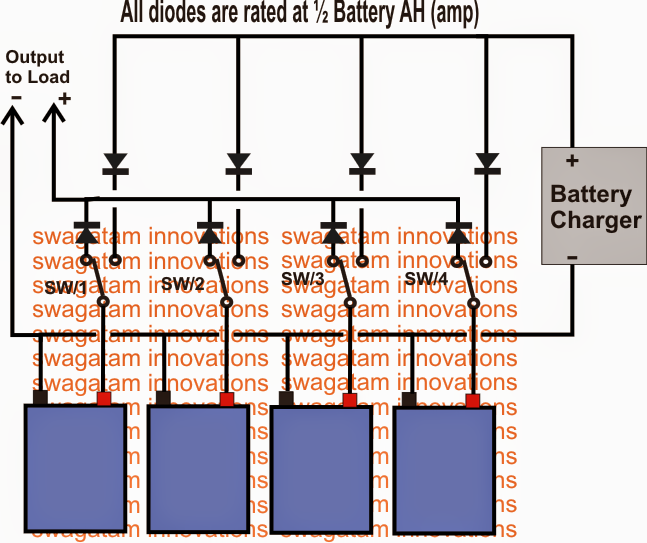Within this article we discover ways to charge multiple batteries separately or together which can be associated in parallel making use of a single battery charger and by means of a manual SPDT changeover switch bank.
Making reference to the following diagram, the design demonstrates four batteries with their negatives associated with each other to form a common negative rail.
The positives are generally shut down separately to the poles of four discretely connected SPDT switches.
The one of the two changeover contacts of the SPDT switches are properly associated with the output load while the others with the battery charger positive.
All the above terminations are created via separate rectifier diodes, each for output and input positives of the batteries.
The mentioned parallel battery charging with changeover arrangement permits the user with choices to hook up as much number of batteries as preferred in the array, as well as to choose which battery or the number of batteries you can built-in with the charging system, or with the output, or both.
The diodes in the system ensure that the batteries do not get to know one another creating a cross discharge across each other, and guarantees a step wise charging and discharging for the same.

Leave a Reply